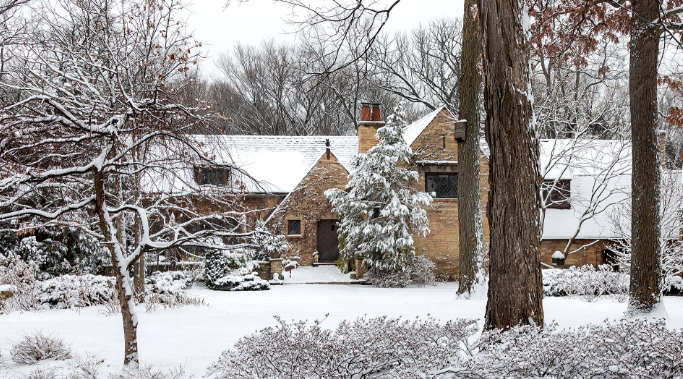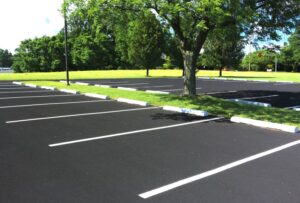A truly beautiful yard isn’t just for summer—it’s a space that should shine in every season. Top Landscape in winter spring planning is about making your outdoor space thrive through the frost of winter and bloom into the vibrancy of spring.Whether you’re dealing with snow-covered gardens, frost-kissed shrubs, or early spring blooms, strategic landscaping can ensure your property remains appealing and functional year-round. By combining seasonal plant choices, structural features, and maintenance techniques, you can create a landscape that transitions gracefully from winter to spring.
Why Plan for Both Winter and Spring Landscapes
Year-Round Beauty
Planning ahead ensures your property looks stunning regardless of the season.
Seasonal Plant Health
Proper preparation helps plants survive winter and flourish in spring.
Increased Property Value
A well-maintained seasonal landscape can significantly boost curb appeal.
Reduced Maintenance Costs
Proactive care prevents costly replacements in spring.
Personal Enjoyment
Your outdoor space becomes a source of joy every month of the year.
Key Elements of Winter Landscaping
Evergreen Plants
Pine, spruce, and juniper retain color and structure all year.
Ornamental Grasses
They add texture and movement even in cold months.
Hardscaping Features
Paths, benches, and garden sculptures bring structure when plants are dormant.
Lighting Design
Winter days are shorter, so landscape lighting enhances visibility and charm.
Winter-Friendly Containers
Planters with hardy plants keep patios and entrances inviting.
Spring Landscape Essentials
Flowering Trees and Shrubs
Dogwoods, magnolias, and lilacs bring vibrant spring color.
Seasonal Bulbs
Tulips, daffodils, and hyacinths create early bursts of beauty.
Fresh Mulching
Retains soil moisture and keeps weeds at bay after winter.
Lawn Restoration
Aerating and overseeding ensure healthy spring grass growth.
Irrigation Check
Repairing and testing systems prepares your yard for warmer weather.
Design Strategies for Winter to Spring Transitions
Layered Planting
Mix evergreens, winter-blooming plants, and spring perennials for continuous beauty.
Color Planning
Use warm hues for winter cheer and bright tones for spring freshness.
Focal Points
Garden statues, water features, or pergolas create year-round interest.
Seasonal Containers
Change plant selections in pots to match the season.
Pathway Integration
Stone or gravel paths remain functional through snow and rain.
Maintenance Tips for Winter to Spring Landscapes
Winter Care
- Protect plants with burlap wraps.
- Clear heavy snow from shrubs to avoid breakage.
- Prune dormant trees for healthier growth.
Spring Preparation
- Remove winter debris and clean garden beds.
- Fertilize to encourage healthy growth.
- Check for winter damage to plants and hardscapes.
Common Mistakes to Avoid
Neglecting Soil Health
Cold weather can compact soil, making spring growth harder.
Overwatering in Winter
Can lead to root rot in dormant plants.
Using Only Summer Plants
Leads to a dull winter appearance.
Skipping Seasonal Lighting
Makes landscapes feel lifeless during dark winter evenings.
Ignoring Pest Control
Some pests overwinter and can harm spring plants.
Best Plants for Landscape in Winter Spring
Winter Favorites
- Boxwood
- Red Twig Dogwood
- Holly
- Winter Jasmine
Spring Favorites
- Forsythia
- Azaleas
- Peonies
- Cherry Blossoms
Incorporating Hardscape for Year-Round Appeal
Stone Pathways
Durable and usable in all weather. Affordable Landscape in Winter Spring
Pergolas and Arbors
Provide structure for climbing plants that bloom in spring.
Garden Benches
Offer winter seating and spring relaxation spots.
Retaining Walls
Protect gardens from winter erosion and create planting tiers for spring.
Hiring a Professional Landscaper for Seasonal Design
Expert Plant Selection
Professionals choose species that thrive in your climate.
Efficient Planning
Ensures smooth seasonal transitions.
Customized Solutions
Designs that reflect your home’s style and your preferences.
Ongoing Maintenance
Keeps your property looking great year-round.
Budget-Friendly Ideas for Landscape in Winter Spring
DIY Seasonal Containers
Switching plants in pots saves on large landscaping costs.
Mulching with Natural Materials
Use fallen leaves or pine needles in winter.
Repurposing Garden Features
Use old barrels, crates, or stone slabs for seasonal décor.
Planting Perennials
They return each spring without replanting costs.
FAQs
Q1: What is the best time to prepare for spring landscaping?
Late winter is ideal for soil preparation, pruning, and planting certain bulbs.
Q2: Can I plant flowers in winter?
Yes, winter pansies and certain hardy perennials can thrive in colder months.
Q3: How can I make my winter landscape more colorful?
Use evergreens, colorful bark plants, and winter-blooming flowers.
Q4: Should I water plants during winter?
Only when soil is dry and temperatures are above freezing.
Q5: How do I prevent pests in winter?
Clean up debris and inspect plants regularly to remove overwintering pests.
Conclusion
Designing a is about more than just planting flowers—it’s about creating a balanced, beautiful, and functional space that thrives year-round. With the right plant selection, thoughtful design strategies, and proper maintenance, your outdoor space can stay visually appealing in the coldest months and burst into vibrant life in spring. Trusted Landscape in Winter Spring
By blending evergreens, seasonal blooms, hardscape features, and lighting, you can enjoy a yard that’s as inviting in January as it is in April. A well-planned seasonal landscape not only boosts curb appeal but also makes your outdoor space a year-rou





